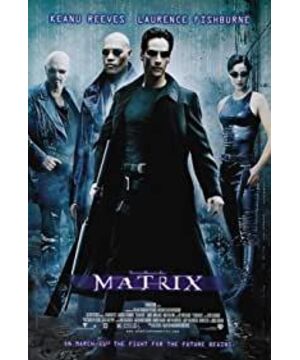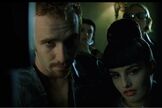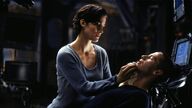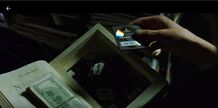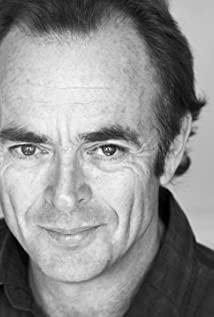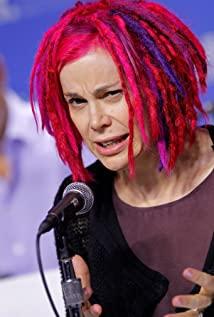The first time I watched it, I just thought it was cool and exciting. I watched the excitement and didn't think deeply about it. Later, because of a certain philosophical question, I accidentally searched for "brain in the tank", "Zhuang Zhou's dream of butterfly", and "Descartes' suspicion". After understanding these things, I then looked at The Matrix, and suddenly I had a lot of feelings. No matter what the director and screenwriter of this film are based on, or what the creator originally wanted to express, but the benevolent sees the benevolent and the wise sees wisdom, it is still a science fiction classic. One more word: It doesn't matter whether the movie is read or not understood, as long as it is good-looking and happy, if you want to pretend to be deep, it will be too tiring.
[The origin of the brain in the tank]
1. The world-famous cranial neurology originator Wilder Graves Penfield (Dr. Wilder Graves Penfield, 1891-1976, a famous American cranial neurologist) in the mid-20th century, In-depth research on high-level brain activities.
He used electric currents to stimulate different parts of the cerebral cortex in an attempt to alleviate the symptoms of diseases such as mental epilepsy. The subject complained of having a little bit of memory, smelling the smell in the past, hearing a sound, seeing a color, all of which were caused by the stimulation of trace currents in specific parts of the brain. He found that when certain areas of the cerebral cortex were stimulated, the memories of the past would be vividly remembered, as if a video tape showing all the sounds and emotions of the original scene of the event. It seems that everything that happened during our growth, including countless moments we thought we had forgotten, has been recorded and preserved. This phenomenon in which electrical stimulation of the right temporal lobe of the brain causes the patient's memory of the past is called "flashback". Based on a large amount of data accumulated by observation of the focus of epilepsy patients, Penfield proposed the "Central Brain System Theory" in 1954. This theory believes that the circuit between the temporal lobe and the diencephalon is the main area of human memory. This area is like a recording and video recording device that records all human experiences without omission. Although this recording is not subjectively realized in most cases, it is indeed achieved objectively. Therefore, when a special stimulus is applied to this area, some past events that cannot be recalled under normal circumstances are recalled.
Dr. Penfield's discovery means that human memories are stored in the cerebral cortex and can be stimulated by brain currents or external currents. This provides a lot of material for science fiction.
2. In 1981, Hilary Putnam (Hilary Putnam)
expounded the hypothesis about the "brain in the tank" in his book "Reason, Truth, and History": " A person (it can be assumed to be himself) was operated on by an evil scientist. His brain was cut off from his body and placed in a tank containing a nutrient solution to maintain brain survival. The nerve endings of the brain are connected to the computer. The computer sends information to the brain according to the program, so that he maintains all normal hallucinations. For him, it seems that people, objects, and the sky still exist, and their own movements and body sensations can be input. This brain can also be input. Or intercept the memory (intercept the memory of brain surgery, and then enter the various environments and daily life that he may experience). He can even be entered with a code, and he can'feel' that he is reading an interesting and absurd text here: a person After being operated on by an evil scientist, his brain was cut off from his body and placed in a tank containing a nutrient solution to keep the brain alive. The nerve endings of the brain were connected to a computer, and this computer followed the program to The brain sends information so that he can maintain the illusion that everything is completely normal..."
The most basic question about this hypothesis is: "How do you prove that you are not in this predicament?"
[Simple understanding of the film]
In "The Matrix", Neo is a real person raised in a nutrient solution, and his feelings and consciousness activities are formed and controlled by the electrical stimulation of the computer system "The Matrix". All his memories are actually formed by external electrodes stimulating the cerebral cortex, rather than real history. He has been living in a virtual world constructed by a computer network. Because "The Matrix" will also have "vulnerabilities" and will be invaded by "viruses", the "people" in the "The Matrix" system sometimes find some strange phenomena, such as people can automatically overcome gravity. Floating, and these phenomena are not real, but caused by system bugs. "The Matrix" can avoid these "abnormal phenomena" by killing "viruses" or bug fixes. Morpheus is equivalent to a "virus", and Super Agent Anderson is equivalent to a system bug or antivirus tool.
The earliest record similar to the hypothetical "brain in a tank" is the "Zhuang Zhou Mengdie" in ancient China. "Zhuangzi·Qiwu Lun" contains: "The former Zhuang Zhou dream is a butterfly, and the butterfly is vivid, and he is self-conscious, but he does not know the Zhou. If he suddenly realizes it, then the Zhou is sad. I don’t know that the Zhou’s dream is the butterfly and the butterfly’s dream is the Zhou and the butterfly. There must be a difference between Zhou and butterfly. This is called materialization."
[Reproduced with a comment] This person basically said everything I thought...
May 11, 2010, Li Miao,
United States, 1999 The sci-fi film "The Matrix" in the year, the Chinese translation of "The Matrix", talked about that by 2199, most humans lived in a virtual world, and we were controlled by a machine called the Matrix. The life of a person living in the mother's body is completely virtual or false, just like a computer program. So, what does virtual mean here and how is it achieved?
The programmer Neo is also a hacker. He was found by Morpheus, a leader of the resistance group, and asked him to choose a red pill and a blue pill. Choose the red one, and he will see the truth about the mother. He chose the red one and entered a terrible world: He lived in a tank full of liquid, with wires and pipes plugged into his body, and similar tanks all around. The mother uses this tank to control him. The life of a programmer and hacker in the mother is actually controlled by the mother through this tank.
The brain in the tank is an ideal experiment for thinking about reality, knowledge, truth, and thinking. In this ideal experiment, we imagine a mad scientist immersed a person’s brain in a tank filled with nutrient solution, and then connected the brain’s nerves to a supercomputer. The computer used simulated pulses to make the brain think it Still living in a real world, the brain can see what it can see at ordinary times, feel that it can command hands and feet, and so on. In this way, the brain does not know whether it is a brain immersed in the tank or a person in the real world.
The brain in the tank virtualizes a life through the computer, and "The Matrix" not only virtualizes the lives of many humans, but also virtualizes the entire world. The extreme version of this question is, is our world, this universe, virtual? In fact, there is no so-called earth, no solar system, no distant stars and galaxies that we have observed through scientific instruments. Everything is virtualized by a super computer and a super program. This virtual world has a perfect physics system, such as Newton’s law of universal gravitation, nuclear physics, and the Big Bang theory. So these are all virtual.
Perhaps the first person to ask this kind of question was Descartes. Descartes proposed six philosophical meditations in a book. He gave up all beliefs and tried to use pure thinking to establish a knowledge system of the world around us. The first meditation is whether he really exists, or is he dreaming, or is he blinded by an evil genius that he thinks he exists. This first meditation is actually the brain in the Cartesian version of the tank. Of course, the earlier although unsystematic question was asked by Zhuangzi: Did I become a butterfly in my dream, or did the butterfly dream of me? If I am dreaming, or the brain in the tank, then all my beliefs are untrue and unreliable.
In Descartes' second meditation, he answered the question raised by the first meditation, I exist. If I believe everything I feel, I certainly exist. If I believed that I was deceived by an evil genius, then I would not be non-existent, because it is impossible for him to deceive a non-existent thing. So Descartes said: I am, so I exist (Iam, Iexist). This sentence means that my perception itself determines my existence.
The brain in the tank is more visual and simpler than the Cartesian problem, because this ideal experiment assumes that our experience can be reduced to the perception of the brain. Assuming this reduction is correct, American philosopher Hilary Putnam thinks that I cannot be the brain in the tank. If I am the brain in the tank, and I can prove that I am, it means that the brain in my tank has received the signal that I am in the tank. However, the signals I receive are all about the virtual world. How could this signal be about a real tank? The core of Putnam's argument is that it is impossible for us to perceive the external world. In other words, everything I perceive forms a self-consistent system, and the external world of this self-consistent system is undefinable and unperceivable.
Of course, Neo in "The Matrix" was tried by the resistance organization to unplug his tube and get out of the tank, so he can be sure that there are two worlds, one is the virtual world in the mother body, and the other is the world away from the mother body. But we cannot think about our world with the logic of this science fiction, because none of us has left our "mother body", and we have never even seen anyone who has ever left our "mother body". Therefore, we cannot perceive and define the outside.
So, is our world and our universe virtual? Neither Descartes nor Putnam's answers were satisfactory enough, nor were my answers above. Maybe we will never be able to prove that we are real and not virtual. Perhaps the programmer who designed this wonderful program of our universe will never let us know that there is an external world. Since we will never know, then this external world is completely meaningless to us, and there is no difference between the so-called real and virtual. My other argument is that if one day our science and technology develop so that we can confirm that we are virtual, we will be able to find out who designed us, just like Neo. At that time, our function is no less than his, it will be an interesting scene.
Doujin Yuye wrote an article "This Universe Is Not the Matrix". His arguments against our universe as the matrix are: 1. If we are virtual, this program needs to be maintained and upgraded, but this never seems to happen. 2. The universe is too big. If the genius who designed this program is only interested in humans, most of the things in the universe are completely redundant and wasteful. 3. Once the laws of physics are stipulated, they have not been changed. Why?
All his arguments can be refuted. For example, in the first one, we can completely assume that the design genius has designed a seamless program from the beginning, and the program shutdown will not be recorded in the subsequent process. I think the third article is more difficult to refute, because the establishment of the third article shows that the programmer is indeed very talented, making everything look so self-consistent and boring. Once the program is finished, I don't want to change it. But you might as well imagine that there is indeed such a talented and boring programmer.
In fact, there may be another version of the brain in the tank: Our world is real, not virtual, but it is indeed made by a genius in a prehistoric laboratory. Because we can imagine that one day, we ourselves use huge energy in the laboratory to create a small universe, this small universe and our laboratory are connected through a fixed-size tunnel, but outside the tunnel, this small universe is constantly expanding and gradually evolving A new huge universe (but the size of the tunnel remains the same, so our laboratory is still safe), in which new species and new intelligent creatures are produced.
View more about The Matrix reviews


